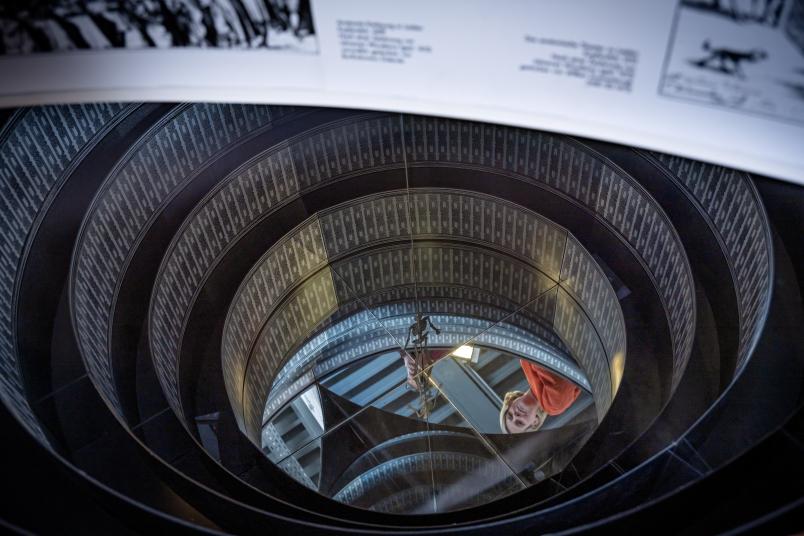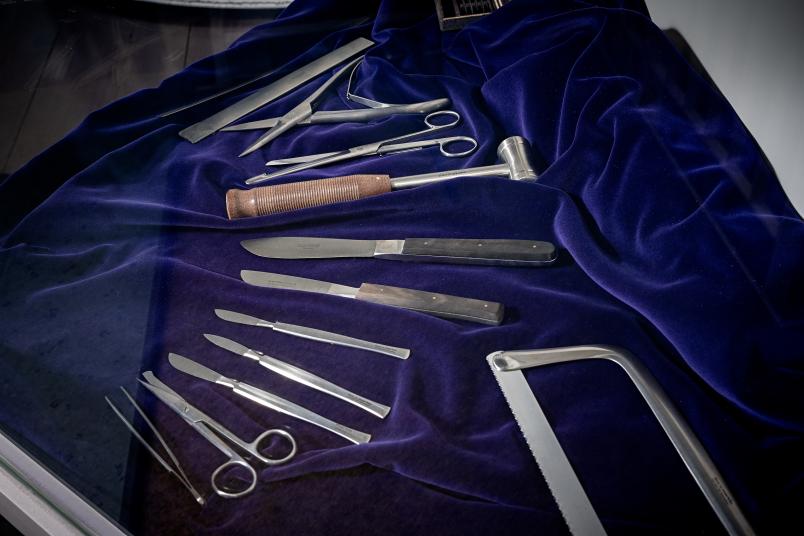History of Architecture
A Stage for Science
Starting in the Early Modern Period, anatomical theaters served as a venue for the public dissection of human bodies. An act between visualization and concealment.
This production is worth the price of admission! Candlelight casts a soft light across the darkened room. Music is played during the intermissions, which are urgently needed during the hours-long event. From the upper tiers of the anatomical theater, spectators have an excellent view of the body lying on the dissection table in the middle of the room, its abdominal cavity opened wide. The anatomist presents each organ removed via scalpel while holding an Aristotelian lecture on natural philosophy that is less concerned with identifying specific diseases and more so with discussing how the ideal human body is constructed.
Decoding God's plan for the world
A frightening scene? Perhaps, from our modern perspective. Yet such events served as a means of comprehensive education for people in the late 16th century. They learned not only about human anatomy, but also about themselves and God’s plan for the world. The dissections were public, and spectators only had to pay an admission fee to get access to the tiers from which they could watch the spectacle.
Art historian Professor Christine Beese from the Architectural History field at Ruhr University Bochum has extensively studied this topic. It started when she stumbled across the phrase “anatomical theater“ one day. “I thought it was such unique wording. If a room’s purpose is to provide objective and realistic insight, why call it a theater? Why the moody lighting? Was something supposed to be concealed?“ the scientist wondered.
The bodies that were dissected in anatomical theaters often came from executed prisoners.
Indeed, the circular arrangement of the tiers from which all spectators were able to look down at the body spoke to these spaces’ role as a place of visualization and transparency. “But they were also an opportunity to stage a production based on the fact that there are natural mysteries that nature itself does not reveal,” says Beese.
In the case of the early anatomical theaters in particular, such as in Padua in Italy, the architecture amplified the mysterious atmosphere. The lecture hall was shaped like a funnel, and the path leading inside was labyrinthine. Steps on the side of the room led upward. The bodies were brought in from another room, already opened in order to draw the viewers’ attention. The anatomist performed his dissection, candles were lit, windows were darkened, and there was even music during the intermissions.
The room and the event were conceived to stage the wonder of nature.
“The purpose was visualization,” says Beese. “But it was heavily controlled and staged. There was no bright lighting, you weren’t able to look at the organs yourself. The room and the event were conceived to stage the wonder of nature.”
When the first anatomical theaters were being constructed, the prevailing idea was that the human body is a microcosm of the macrocosm. Organs were attributed to specific planets. Everything that happened in the macrocosm influenced the body, and understanding the human body meant we could draw conclusions about God’s plan for the universe.
The aim was to remind the public that man is mortal, that we must live a virtuous life in harmony with society and Christian values.
“Over time, the idea of what we see in anatomical theaters has evolved,” explains Beese. “It comes down to our view of the human body at the respective period in time.” For example, morality was exceedingly important in the 17th century. “The aim was to remind the public that man is mortal, that we must live a virtuous life in harmony with society and Christian values.”
Anatomical theaters were very popular research tools for medical and architectural historians in the early 20th century, as these funnel-shaped spaces were seen as a sort of inverted telescope. “But these spaces did not have a purely technical function at all in the Early Modern Period, meaning the 16th and 17th centuries,” explains Beese. “The people who built the first anatomical theaters had a much more comprehensive understanding of the effect of architecture than historians have long assumed.” According to the Aristotelian doctrine of the soul, knowledge was created through the experience of all human senses. The human body, its organs, and its senses had a spiritual connection with the physical world. However, today we privilege the eye and the sense of sight. “These spaces take on an instrumental character to the extent that we perceive them as such. It is not their basic architectural structure that changes, but rather our expectations of it. Our perception is shaped by what we associate with it,” says the art historian.
The tiers in most anatomical theaters were arranged in a similar fashion to the model shown here.
One thing was of the utmost importance to Professor Beese in her research: “Because the way people thought in the past differs so much from our perspective today, a certain step has to be taken to free ourselves from our personal points of view. This shows how conditioned our perspectives are, and that a personal viewpoint is only one of many.”
Before the physical buildings were constructed to host these dissections, they were conducted outdoors in university courtyards. Even then, the spectators were positioned in temporary viewing tiers that could be assembled and disassembled as needed. They were set up in a manner similar to viewings of executions. Because the bodies selected for public dissection were usually executed criminals, this was all the more shocking for the spectators’ morals.
There was a competition between the nations
But what caused these events to move indoors to specially constructed buildings? Professor Beese found the answer during her extensive research of the literature: “At the time, the universities were under pressure to impart more practical, application-based knowledge. There was a competition of trade and knowledge between the nations, and technical developments had to be advanced in order to succeed. Physicians wanted to secure their positions by conducting applied research, and rooms were created explicitly for that research.”
Some of the anatomical theaters are quite lavish, and there are reasons for this. “Universities relied on sponsors, similar to external benefactors today. And sponsors—often princes or wealthy merchants—were likely won over by envisioning a building that represented their wealth,” says Beese.
Rooms as works of art
Her wish for the research topic: “Many of these rooms are not viewed by the public as works of art. I hope to change that. Their artistic character played a role in their imparting of knowledge.” Today, we often believe there is a gap between art and science. Science creates new things while art processes things. “But this separation did not exist when these buildings were being constructed,” says Beese. She says that the idea at the time was that knowledge is holistic, that it always came down to knowing how to lead a good lifestyle. What must we know in order to implement God’s plan? “Early anatomical theaters address all of this, and not only through the performative act of opening up a body and holding a lecture. It’s important to emphasize that the architecture itself played an equally crucial role.”


